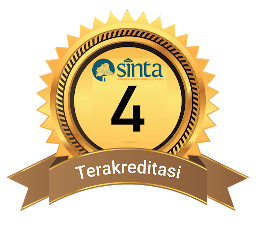Development of Green Chemistry Practicum Module Based on Chemical Equality Materials to Increase Learning Interest In Class XI Students
DOI:
10.29303/cep.v7i1.3745Published:
2024-05-31Issue:
Vol. 7 No. 1 (2024): Edisi Mei 2024Keywords:
Development, Practicum Module, Green Chemistry, EquilibriumArticles
Downloads
How to Cite
Abstract
This study aims to determine the feasibility, practicality, and effectiveness of the green chemistry-based chemistry practicum module on chemical equilibrium material to increase student interest in learning. The research uses the R&D (Research and Development) 4-D model modified into three steps (3-D), namely Define, Design, Develop. This design was modified into three steps due to the limitations of the researcher to carry out the fourth stage of Disseminate. The results of the validity assessment by a validator consisting of two chemistry education lecturers based on the Aiken'V index of 0.77 (valid or feasible). The practical assessment of the chemistry practicum module by the class XI chemistry teacher was tested practically with a percentage of 92.67% (very practical) and received a good response from students in class XI MIPA 2 with an average percentage of 88.15% (very practical). The results of the effectiveness of the practicum module are taken from student interest in learning data, based on the learning interest category index, the average value is 4.22 (effective). The results of the study indicate that the green chemistry-based chemistry practicum module on the chemical equilibrium material developed is feasible, practical and effective to increase student interest in learning
References
Arikunto, Suharsini. 2016. Prosedur Penelitian Pendekatan Praktek. Jakarta: Rineka Cipta.
Fellet, M., 2013. Green Chemistry And Engineering: Towards A Future. United States: American Chemical Society.
Musyarofah. 2006. Pengembangan Buku Petunjuk Praktikum Sains Bidang Kimia SMP/MTS Kelas IX Berdasarkan Kurikulum SMP 2004. Skripsi, tidak diterbitkan. Yogyakarta: FMIPA Universitas Negeri Yogyakarta.
Retnawati, H., 2016. Analisis Kuantitatif Instrumen Penelitian. Yogyakarta: ParamaPublishing.
Zainuddin, M., 2001. Praktikum. Jakarta: Pusat Antar Universitas untuk Peningkatan dan Pengembangan Aktivitas Instruksional Universitas Terbuka (PAUPPAIUT).
Author Biographies
Raka Rangga Disa, Universitas Mataram
Muntari Muntari, Program Studi Pendidikan Kimia, Universitas Mataram. Mataram, Indonesia
Saprizal Hadisaputra, Program Studi Pendidikan Kimia, Universitas Mataram. Mataram, Indonesia
License
Copyright (c) 2024 Raka Rangga Disa, Muntari Muntari, Saprizal Hadisaputra

This work is licensed under a Creative Commons Attribution-ShareAlike 4.0 International License.
Authors who publish with Chemistry Education Practice agree to the following terms:
- Authors retain copyright and grant the journal right of first publication with the work simultaneously licensed under a Creative Commons Attribution License 4.0 International License (CC-BY-SA License). This license allows authors to use all articles, data sets, graphics, and appendices in data mining applications, search engines, web sites, blogs, and other platforms by providing an appropriate reference. The journal allows the author(s) to hold the copyright without restrictions and will retain publishing rights without restrictions.
- Authors are able to enter into separate, additional contractual arrangements for the non-exclusive distribution of the journal's published version of the work (e.g., post it to an institutional repository or publish it in a book), with an acknowledgement of its initial publication in Chemistry Education Practice.
- Authors are permitted and encouraged to post their work online (e.g., in institutional repositories or on their website) prior to and during the submission process, as it can lead to productive exchanges, as well as earlier and greater citation of published work (See The Effect of Open Access).






